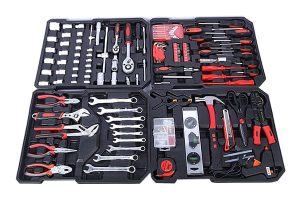In a world increasingly reliant on technology, it's easy to forget the humble tool kit. But whether you're a seasoned DIY enthusiast or a novice homeowner, having the right tools on hand can save you time, money, and a lot of frustration.
While the classic image of a tool kit might conjure up visions of hammers, screwdrivers, and pliers, the modern reality is far more diverse. Today's tool kits reflect the changing face of homeownership and repair, incorporating a blend of traditional and innovative equipment.
"A well-stocked tool kit is like having a trusted friend," says, a home improvement expert. "It's there to help you tackle everything from minor repairs to larger projects."
The Basics
While technology has advanced, there are still some essential tools that every homeowner should have. A basic tool kit should include:
- Screwdrivers: A variety of sizes and types, including flathead and Phillips head.
- Pliers: For gripping, cutting, and bending wire.
- Hammer: For driving nails and removing them.
- Tape measure: Essential for accurate measurements.
- Level: To ensure everything is straight and even.
- Utility knife: For cutting various materials.
Beyond the Basics
As DIY projects become more complex, so too do the tools required. Some additional tools to consider include:
- Drill and screwdriver bits: For a wide range of tasks.
- Wrench set: For tightening and loosening nuts and bolts.
- Saw: For cutting wood, metal, or other materials.
- Clamps: To hold materials securely in place.
- Stud finder: To locate studs in walls.
Specialized Tools
For specific tasks, specialized tools might be necessary. These could include:
- Plumbing tools: Pipe wrenches, drain snakes, and plumber's putty.
- Electrical tools: Wire strippers, voltage testers, and electrical tape.
- Gardening tools: Shovels, rakes, and pruning shears.
- Automotive tools: Socket wrenches, jumper cables, and tire iron.
Tool Storage and Organization
Once you've assembled your tool kit, it's important to store and organize it properly. A good toolbox or chest will protect your tools and keep them organized. Consider using tool organizers or inserts to keep smaller items in place.
Safety First
When using any tool, safety should be a top priority. Always wear appropriate safety gear, such as gloves and eye protection. Read the instructions carefully before using any new tool.
Post time: 08-19-2024




